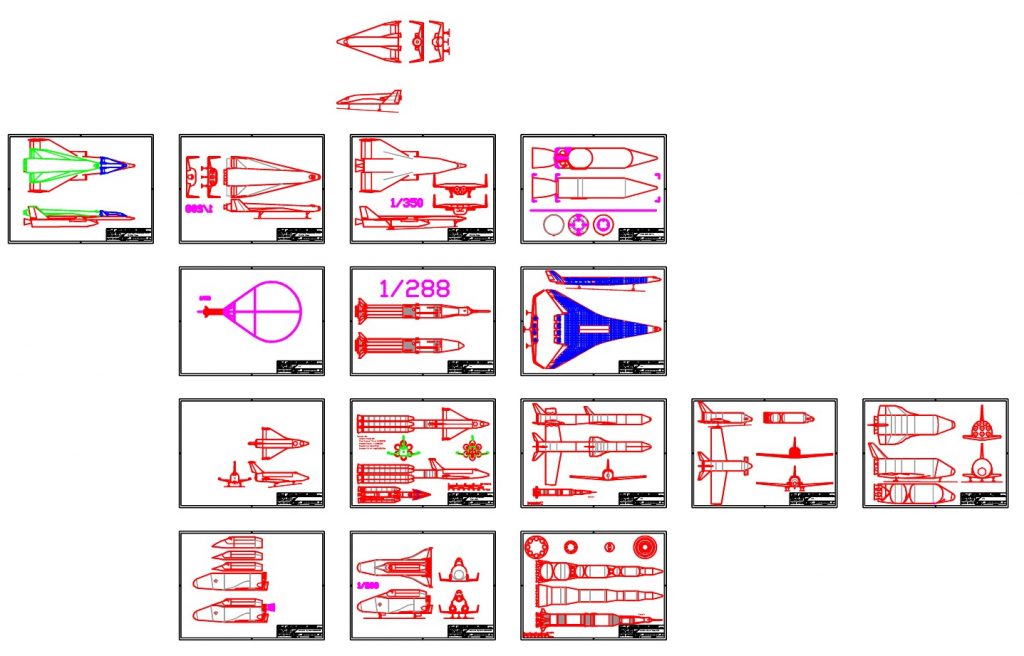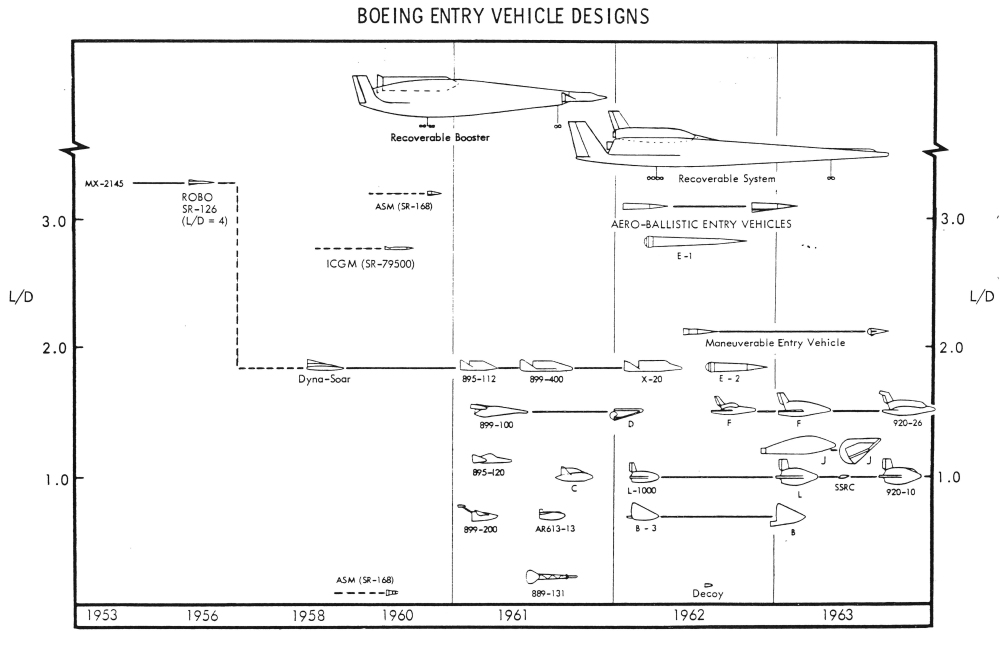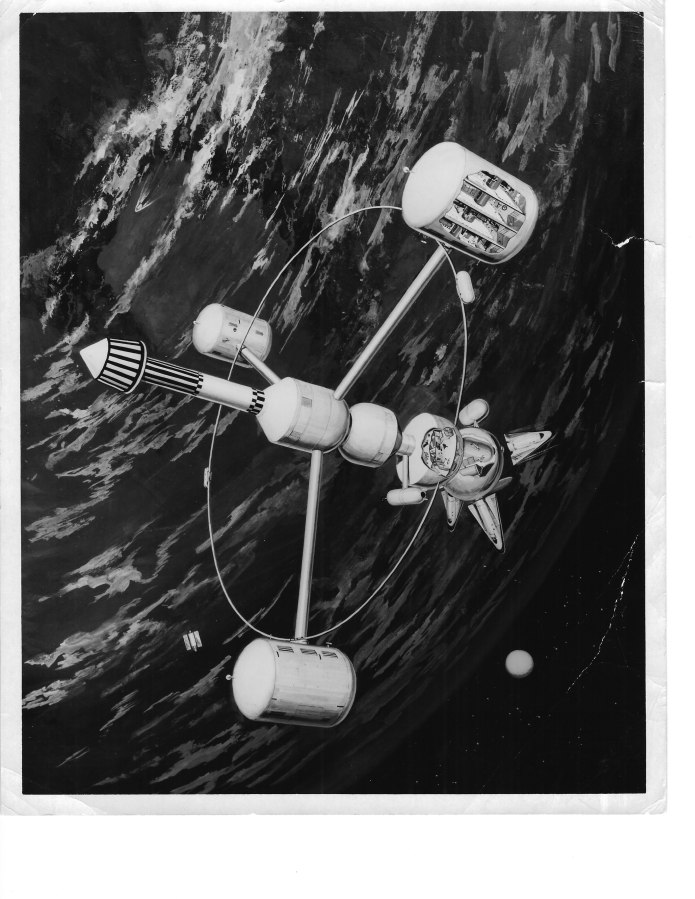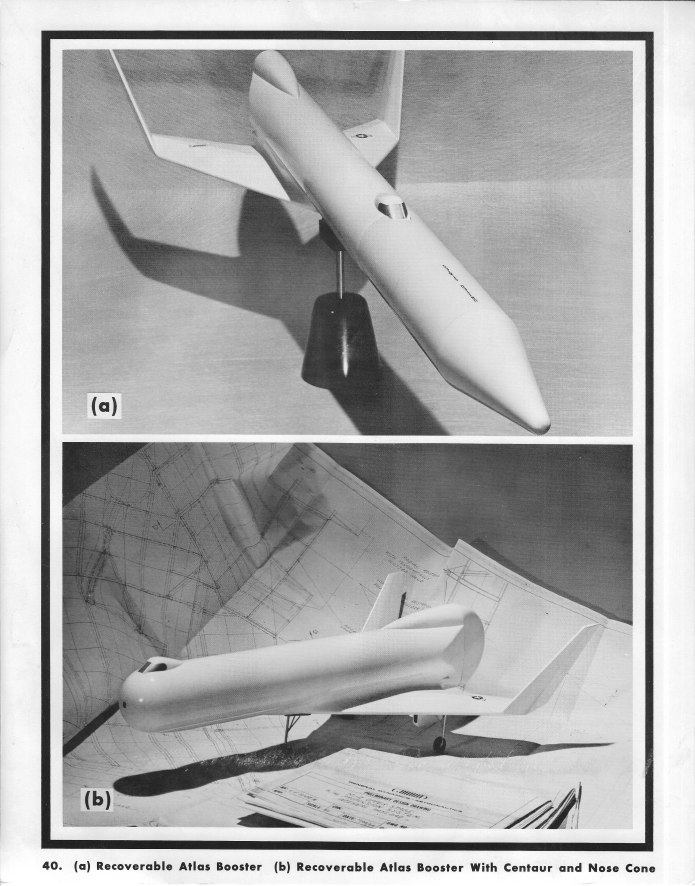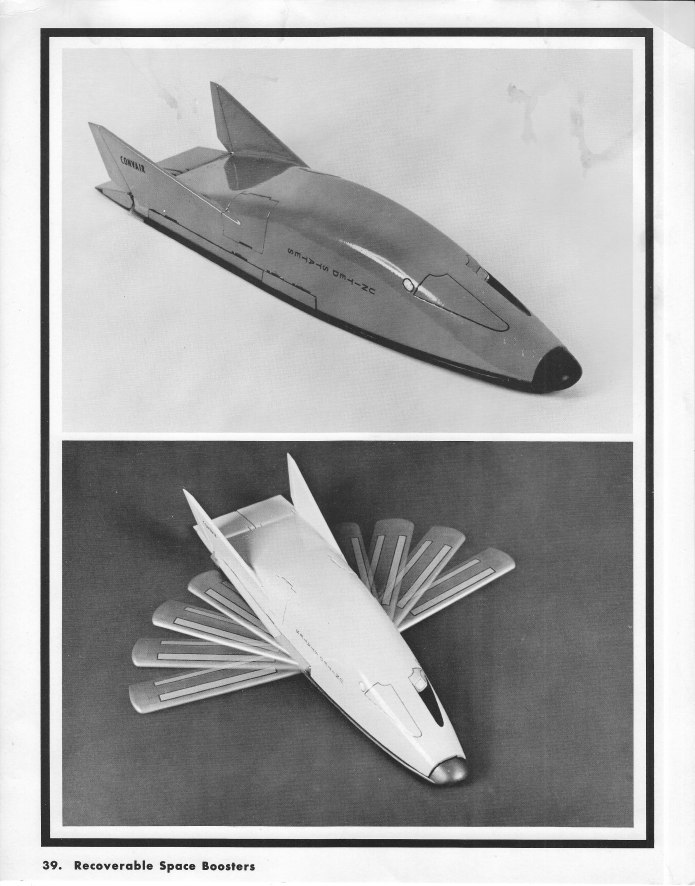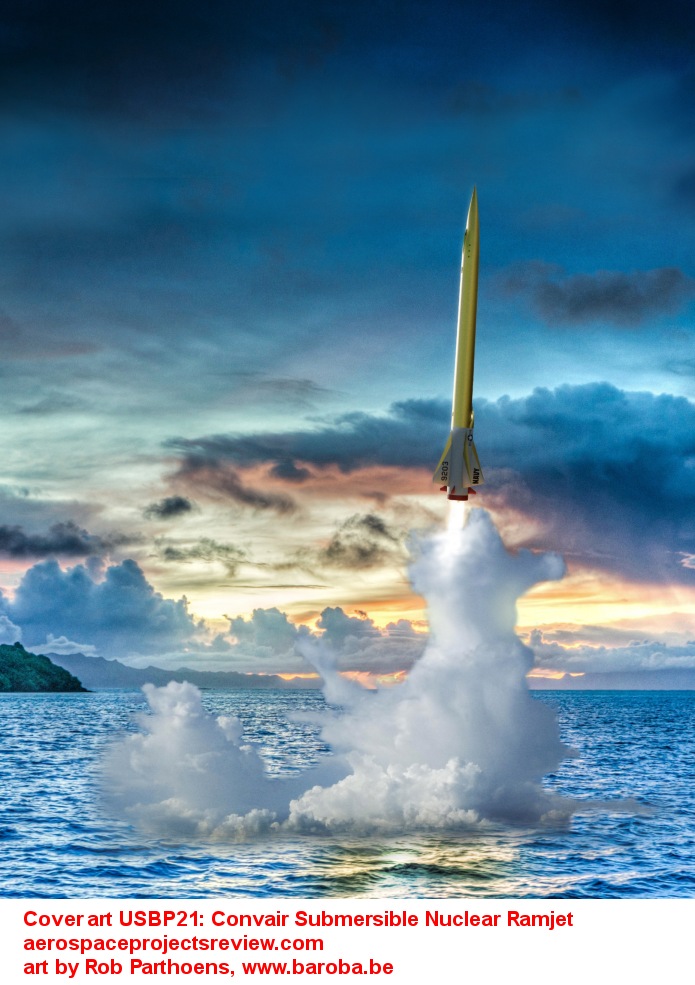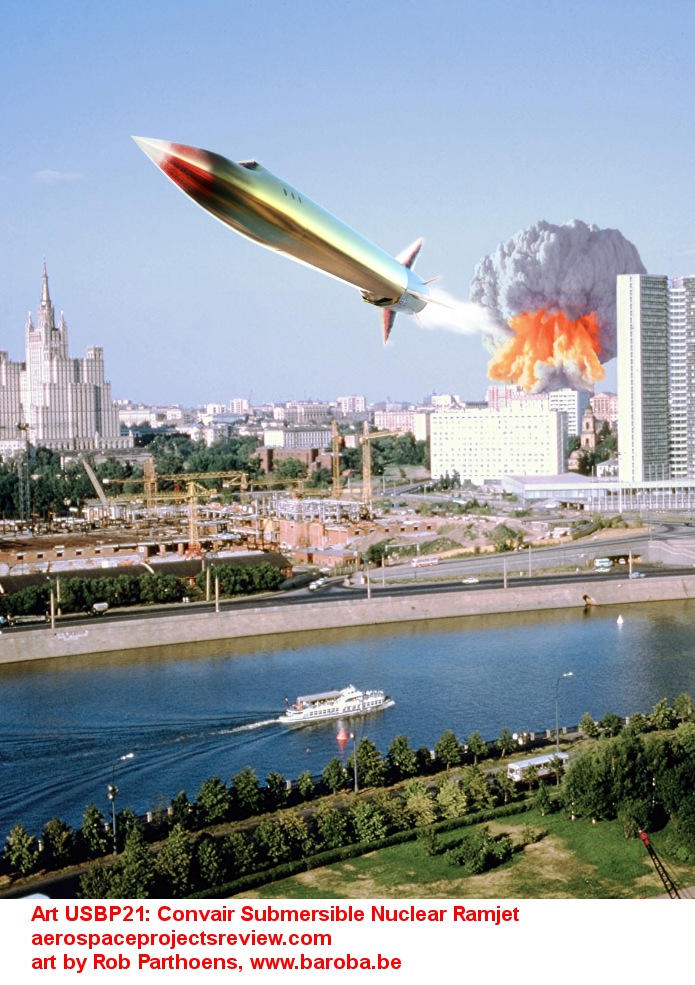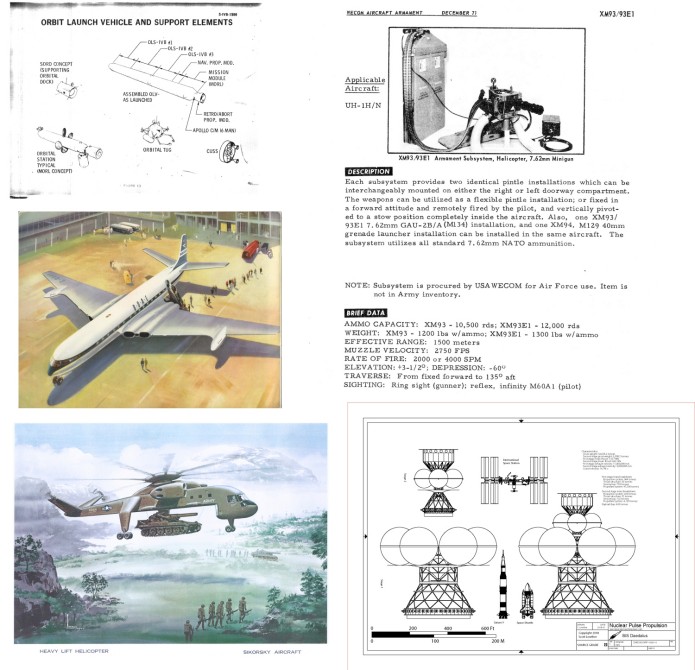First draft of diagrams for the next issue of US Launcher Projects. This will include concepts such as an eight-F-1 Nova, a 1962 Lockheed fully reusable spaceplane launcher, a Boeing HTOHL SSTO, a Convair VTOHL Delta Clipper competitor, a giant SPS launcher, a balloon-recovered Saturn I, an early Space Shuttle concept and an expendable SSTO.
The first Aerojet-Rocketdyne AR-22 rocket engine has recently been assembled. This is a somewhat modified version of the old Space Shuttle Main Engine, meant specifically to power the first stage of the Boeing “Phantom Express” spaceplane. Thrust is 375,000 pounds and the engine is meant to be used 55 times, with servicing every 10 missions.
First Engine Assembled for DARPA and Boeing Reusable Experimental Spaceplane
The Phantom Express is meant to fly often and inexpensively… and appears to be basically an updated version of the mid-90’s Rockwell design for the X-33. It’s not clear to me that a hydrogen-burner using SSME-derived tech can compete economically with the likes of the Falcon 9, but the Phantom Express isn’t really intended to compete in the commercial market. Instead, the Phantom Express is intended as military launch system, lobbing relatively small satellites – communications and recon, with the possibility of GPS-replacements in the event that military action takes them out. Given that any future war with a major opponent will certainly involve attacks on American space infrastructure, it’s reasonable for DARPA to want to have as many rapid response launch systems as practical. The basic concept underlying the Phantom Express is simple and straightforward enough, and likely to be somewhat more rugged and reliable than the hoverslam landing system of the Falcon series… at the cost of probably weighing more.
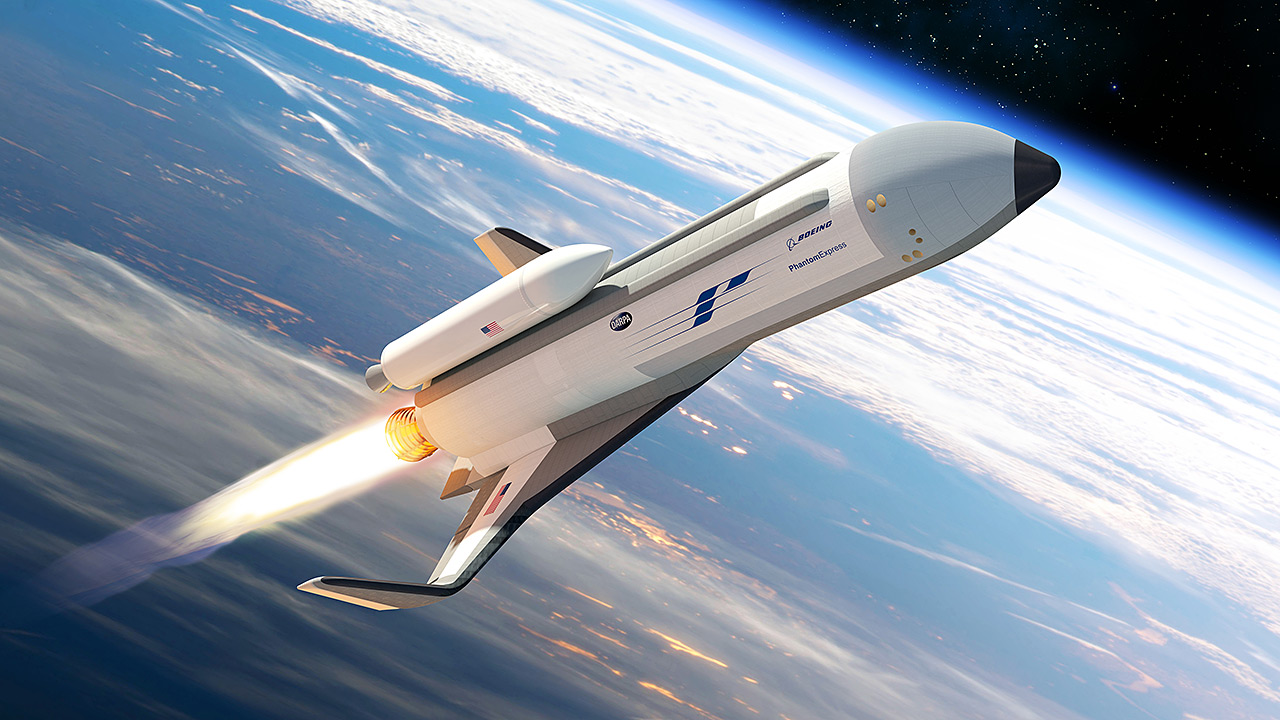
This Startup Got $40 Million to Build a Space Catapult
SpinLaunch, Inc, wants to build themselves a slingatron. If it works it will accelerate a launch vehicle of some kind to 3,000 miles per hour… at ground level. The aerothermal heating and drag loads should prove impressive, thus the vehicles look like updated Sprint missiles.

A Boeing illustration from 1964 showing a number of designs for lifting entry vehicles that Boeing had produced by that point. Most of these are manned vehicle concepts; a few of them are unfamiliar to me. The “B-3 —– B” looks like it might have been an ASSET competitor. The “Recoverable Booster” at top is one of several similar V-shaped designs that used a modestly modified Dyna Soar as the crew capsule up front. One such design was the Model 895 shown (along with competing ASP designs from other firms) in Aerospace Projects Review issue V2N5.
A piece of 1960’s aerospace concept art depicting a sizable (50 to 100 crew) space station equipped with three modules at the ends of arms, intended for artificial gravity via centrifugal force. Presumably the conical structural at the left would contain the nuclear reactor, shielding and radiations; presumably the modules on the hub at the far left would be non-rotating to aid spacecraft docking. Unclear what the source is… but I’d bet on either North American Aviation or Lockheed.
I have uploaded righ-rez scans of both sides of this B&W photo glossy to the 2018-05 APR Extras folder on Dropbox for APR Patrons at the $4 level and up. If you are interested in these images and a great many other “extras” and monthly aerospace history rewards, please sign up for the APR Patreon. What else are you going to spend $4 a month on?
In the 1960’s, prior to the Space Shuttle program, General Dynamics/Convair studied using the Atlas ICBM as a space launch system. no surprise there. But one concept called for a nearly fully reusable Atlas, equipped with wings, jet engines, landing gear and a cockpit to recover the booster in one reusable piece. It would be topped with either an expendable Centaur and satellite/space probe upper stage or a smallish manned lifting body spaceplane with its own built-in propulsive capability. At the time General Dynamics released sizable “educational” cards with information and photos of models of the reusable Atlas. Unlike the normal Atlas, this version did not drop the outboard “booster’ engines, but kept them throughout the mission. An inflatable, deployable afterbody was proposed to fair over the engines after burnout to reduce base drag.
I have uploaded righ-rez scans of both sides of this poster-sized card to the 2018-05 APR Extras folder on Dropbox for APR Patrons at the $4 level and up.
Additionally, a report on this concept is available as Space Doc 52.
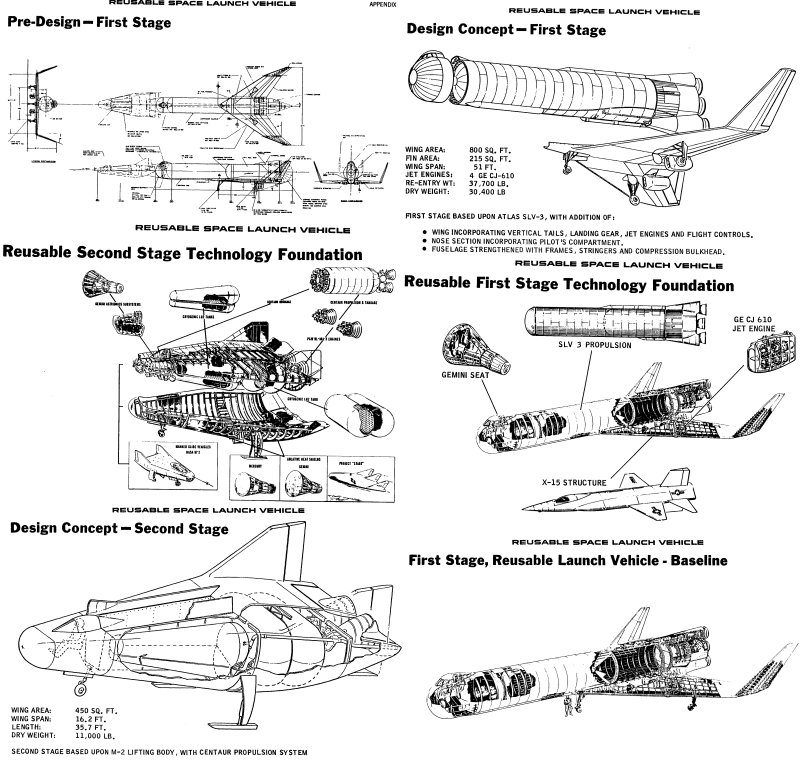
If you are interested in these Reusable Atlas model images and a great many other “extras” and monthly aerospace history rewards, please sign up for the APR Patreon. What else are you going to spend $4 a month on?
The Convair VL-3A was a 1966 concept for a space station logistics spacecraft. It was a sleek, flat-bottomed lifting body featuring a twin tail and flip-out wings that would deploy shortly before landing to reduce the landing speed. It would be fitted with flip-out turbofan engines for range extension, self-ferry and control during landing. General Dynamics released sizable “educational” cards with information and photos of models of the spaceplane showing how the wings would deploy from within the lower fuselage.
I have uploaded righ-rez scans of both sides of this poster-sized card to the 2018-05 APR Extras folder on Dropbox for APR Patrons at the $4 level and up.
I also wrote about and illustrated the VL-3A in US Spacecraft Projects #2, showing the general arrangement of the design along with the disposable propulsion stage and the launch configuration atop the Titan III.
USSP #02 can be downloaded as a PDF file for only $6:

If you are interested in thes VL-3A model images and a great many other “extras” and monthly aerospace history rewards, please sign up for the APR Patreon. What else are you going to spend $4 a month on?
Artwork was created for USBP 21 by Rob Parthoens depicting the Convair Submersible Nuclear Ramjet launching vertically from the ocean. This is approximately the craziest design for a manned aircraft I’ve seen from the post-war period.
Be sure to check out US Bomber Projects issue 21 to read more about this design.
Artwork was created for USBP 21 by Rob Parthoens depicting the Convair Submersible Nuclear Ramjet paying a visit to 1970’s-era Moscow. If you think that this looks like Project Pluto, you’re not far off; this was also a Mach 4, treetop-level nuclear ramjet powered bomber. But there were a few minor differences. Notice that little bump above the nose? That’s the cockpit, a necessary addition because this design was manned. It was also designed to operate as a submarine, cruising the oceans of the world faster than 100 knots before launching upwards and taking flight. Because the 1950’s were rather more optimistic when it came to technological advancement.
Be sure to check out US Bomber Projects issue 21 to read more about this design.
Rewards have been issued to APR Patreon patrons for April, 2018. This month, the “Diagram” is a Sikorsky lithograph of a Heavy Lift Helicopter concept. The Documents include a US Army catalog of airborne weaponry; a paper describing possible additional missions for the Saturn launch vehicles, and BOAC brochure extolling the virtues of the Comet 4 jetliner. The CAD diagram is of the British Interplanetary Society’s “Deadalus” starship design.
If you are interested in helping to preserve (and get copies of) this sort of thing, consider signing up for the APR Patreon.
